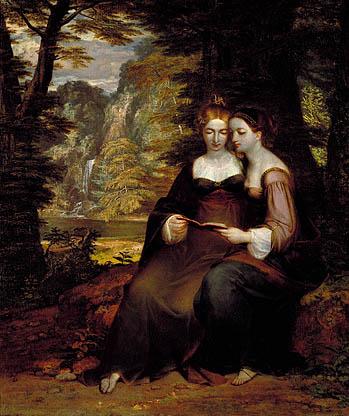On Science

Sometimes, in a set of reflections, one needs to slow down and describe certain details with delicacy and fine attention; sometimes, though, summary strokes are needed. Here the topic is the advent and progress of science in Western culture over the course of two and a half millennia, so broad strokes are a requisite.
We can begin by asking what it is that “science,” as popularly understood, concerns itself with—meaning in this case the knowledge pursued in the natural sciences, and to an extent in the social sciences. Answer: the “natural world” of sense-based empirical observation.
(The issue of whether there is “empirical” study of data that is not sense-data—specifically, data of human consciousness—will occupy us later on.)
The investigations of “science” in this sense are possible only because the “natural world” has been released, from compact experiences of the cosmos, into conceptual and imaginative autonomy. But scientific examination is hardly the basic manner in which we encounter autonomous “nature.” Much more obviously, the world of space and time is experienced as the place where we live. Lived experience of the world precedes and contextualizes any “specialized” analysis of nature by way of science.
Indeed, everyday lived experience is the sole manner in which almost all of us experience the (partially or radically) dedivinized world. It is the encompassing environment or “natural home” here on earth, domed by the day and night skies, where in our normal horizons of concern we interact with family members and friends; solve practical tasks; learn to use and appreciate tools; find beauty in nature and art; exercise ourselves in play and seek entertainment; deal with illness and sadness; and, in general, try to shape a “life story” that feels like a satisfying performance in the human drama into which we have been born.
Making a living, getting around, cooking, building, organizing, adventuring: in an imaginatively post-differentiated world, all these activities occur in a “natural world” no longer inhabited by gods and goddesses. The farmer, or politician, or businessman, or musician, thus inhabits a “secular” world—that is, a world where things can be successfully understood, and actions successfully engaged in, without having to take into account their relationships with divine being or ultimate divine meaning.
But there is also—and this first appears with the ancient Greeks (as historical records show)—a second manner of approaching the meanings that make up the “immanent” world: a scientific mode of engagement. What happens in this mode of inquiry, discovery, and expression, is that there emerges a desire to understand things more systematically than in terms of how they satisfy our needs and desires in practical ways, or how they appeal to us aesthetically, or however else they might be understood on the basis of sensory perceptions. What happens is that the human desire to know asks: what is invariable about things? For example, what is fire in itself—always, and anywhere? (There is a corresponding ethical investigation, famously initiated by Socrates, who asked: What is courage in itself? Or justice?)
This is the mode of questioning, and coming to know, that the ancient Greeks called theoria. And from it has arisen what we generally call science.
The distinguishing feature of scientific understanding is that it offers systematic explanations of things in terms of their intrinsic properties, in terms of their inherent developmental natures and tendencies (think: biology and evolution), and, generally, in terms of the “relations constituted by the uniform interactions of things with one another” (Lonergan). Notice that “divine intentions” or “divine presence” are unnecessary (and alien) here, since these are explanations of intelligible structures immanent in the order of the universe—of the structures and forces in natural things that make them appear and behave the way they do.
Now, the problematic thing for most of us about scientific accounts and their terminology—and there’s no way around this—is that they are not just more (or better) insights of the same kind as our everyday, sense-based understandings. Explaining things in terms of “intrinsic properties” and “uniform interactions,” which are based fundamentally in measurements, involves new kind of insights which open up new, abstract fields of knowledge; and these new kinds of insights require new technical languages corresponding to their peculiar kinds of “intelligibilities”: the intelligibilities of things understood, not in terms of their practical or aesthetic relations to us, but in terms of their measured relations to one other. (To us, the sun moves across the sky; but in terms of the relations of objects to each other, the earth spins as it cycles around the sun.)
Technical scientific languages inevitably baffle the non-scientist (have you ever listened to a conversation between chemists about their work?), even though scientific meanings pertain to the natural world we all experience. Their relevance and utility is confirmed, of course, through experiments carried out in the world-as-observed; but they are comprehensible as scientific meanings only through understanding their essentially abstract languages of theoretical explanation.
Sometimes, in our everyday non-scientific consciousness, we resent this fact.
The idea and practice of science historically develops. First came the (essentially Greek) conception of classical science, whose aim was to obtain absolutely certain and unimprovable knowledge of what is necessarily so. The “modern” scientific ideal and methods, however, transformed this idea of theoria into the more dynamic, effective sciences with which we are familiar (if only in popular appreciation of them). In the modern sciences, what is to be explained includes not only the dependably causal “laws” of relations between things, but also the concrete particularities of natural events. So, beyond “classical laws” that apply in all known cases of certain relations between things (for example, the mathematical regularity of the “law of falling bodies” formulated by Galileo), science discovers ways of explaining, in terms of statistical laws of occurrence, the random aspect of events and their convergences (for example, the statistical prediction that in a certain locality there is a 45% chance of precipitation tomorrow).
In other words, for modern science, “relevant data” includes, in addition to data susceptible to explanation by abstract laws explaining unvarying regularities, all the variations that one can find in the universe; all the differences events can display; even abnormalities and the breakdowns of typical development. The ideal in modern science is a never-ending search to determine the intelligible relations that explain all the objects and events in the universe—a search understood, now, to be a process yielding not—as Aristotle had hoped—a perfect grasp of what must exist (for nothing in the world exists of necessity!), but only better and better approximations of explanatory truth in the form of verified hypotheses always open to revision.
What is consistent from the ancient through the modern sciences is that objects are to be explained as they are “in themselves”—that is, in terms of their internal properties and their relations to each other. Modern science, however, dramatically changed the game, by using mathematics and measurement as the basic element of relation; by experientially appealing to all available data; and by grounding its verifications in experiments. In this way knowledge in each scientific field and sub-field has come to be viewed as an ongoing process of discovery and revision for which methods for advance and application keep being worked out.
Both the explanatory vistas opened up by the modern sciences and the technologies they have made possible—the tools in our daily lives, which fascinate (or overwhelm) us—have led some to view the “scientific” mode of knowing as the only kind that reveals what is true and real about the world. That outlook, however, has inevitably engendered its own backlash: many voices in our culture insist on the importance of recognizing the complementarity of scientific truths, on the one hand, and those of everyday common sense (and scholarship, and art, and philosophy, and even traditional spirituality or religion) on the other.
Which is scarcely surprising, given these three facts:
First, for the vast majority of persons, for whom the technical languages of the sciences themselves are closed books, meanings are grasped solely through the kinds of understanding that belong to “everyday” (i.e., non-scientific) modes of experience; and the meaningful of one’s existence is grounded in those meanings.
Second, “Nature” includes, rather problematically, human nature; and explanations concerned with human nature must take into account, not only relevant data of sense, but also the data of human consciousness (and its meaning-creations in all their variety).
And third, we do not live merely in the spatiotemporal universe of “Nature.” We live in a cosmos comprised of the world and its transcendent ground.




